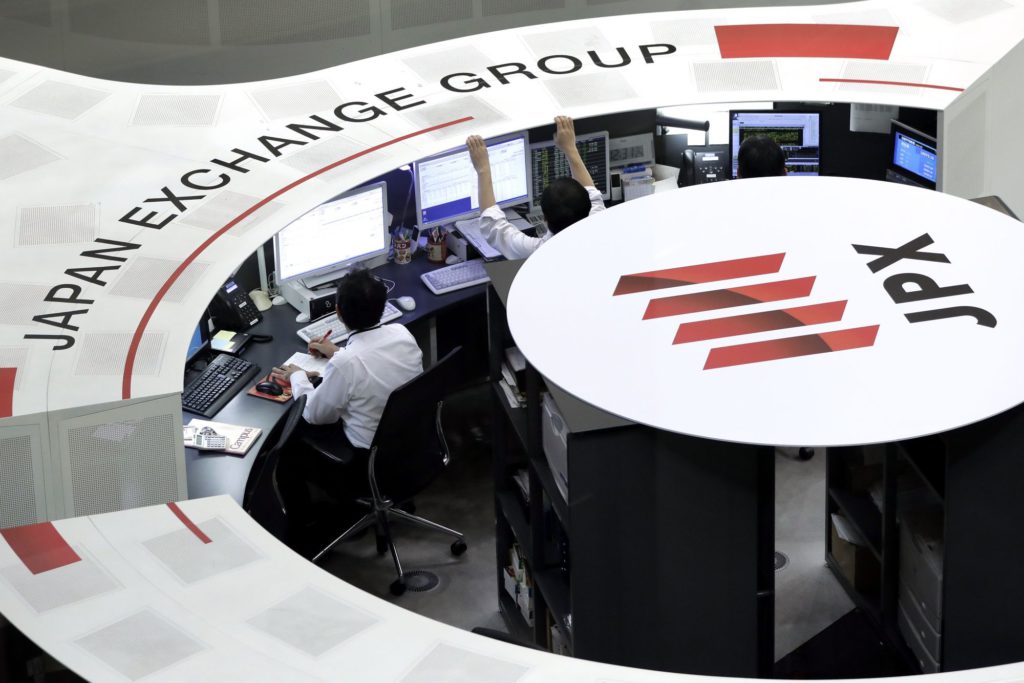Stocks continued to recover from oversold levels, with traders weighing renewed speculation that global central banks could moderate their aggressive policies to prevent a hard landing.
(Bloomberg) — Stocks continued to recover from oversold levels, with traders weighing renewed speculation that global central banks could moderate their aggressive policies to prevent a hard landing.
A rally in the S&P 500 put the gauge on track for its best two-day surge since April 2020. On top of the obvious short squeeze, another poor economic reading moved markets Tuesday. US job openings sank to a 14-month low — which may fit well with a Federal Reserve that’s extremely concerned about a hot jobs market.
Treasury yields dropped once again in a reversal of the surge that took place in the past several weeks. The dollar fell. Oil surged after OPEC+ said it was considering an output cut of as much as 2 million barrels a day, a million barrels higher than previously anticipated.
The debate over peak hawkishness has intensified after a dovish surprise from Australia’s central bank and bond buying by the Bank of England. The idea of a Fed pivot, however, has been met with a lot of skepticism. For one, there’s the perception that not much has fundamentally changed to sway officials from their primary goal to knock down inflation.
Then, there’s the obvious fact that stock pessimism reached such extreme levels that a rebound would be just a matter of when. And that would be the main reason pushing stocks higher.
For markets that had been “nearly one-sided,” the liquidation of those positions is a big reason to squeeze in the other direction so vigorously, according to Fawad Razaqzada at City Index and Forex.com.
“While it ‘feels’ like the markets may have bottomed out — which is certainly a possibility, a small possibility, but a possibility nonetheless — it is important to not get caught in another bull trap,” Razaqzada said. “We are still in a bear market and this could just turn out to be another relief rally.”
Read: Investors Grapple With Massive Market Changes, in Eight Charts
Key events this week:
- Eurozone services PMIs, Wednesday
- OPEC+ meeting begins, Wednesday
- Fed’s Raphael Bostic speaks, Wednesday
- The Reserve Bank of New Zealand meets, Wednesday
- Eurozone retail sales, Thursday
- US initial jobless claims, Thursday
- Fed’s Charles Evans, Lisa Cook, Loretta Mester speak at events, Thursday
- US unemployment, wholesale inventories, nonfarm payrolls, Friday
- BOE Deputy Governor Dave Ramsden speaks at event, Friday
- Fed’s John Williams speaks at event, Friday
Will earnings disappoint and push equities to new lows? This week’s MLIV Pulse survey asks about corporate earnings. It’s brief and we don’t collect your name or any contact information. Please click here to share your views.
Some of the main moves in markets:
Stocks
- The S&P 500 rose 2.8% as of 11:13 a.m. New York time
- The Nasdaq 100 rose 3.2%
- The Dow Jones Industrial Average rose 2.4%
- The Stoxx Europe 600 rose 2.9%
- The MSCI World index rose 3.1%
Currencies
- The Bloomberg Dollar Spot Index fell 0.8%
- The euro rose 1.4% to $0.9968
- The British pound rose 0.9% to $1.1425
- The Japanese yen rose 0.1% to 144.38 per dollar
Cryptocurrencies
- Bitcoin rose 2.6% to $20,110.65
- Ether rose 1.8% to $1,348.23
Bonds
- The yield on 10-year Treasuries declined four basis points to 3.60%
- Germany’s 10-year yield declined four basis points to 1.87%
- Britain’s 10-year yield declined nine basis points to 3.87%
Commodities
- West Texas Intermediate crude rose 3.4% to $86.48 a barrel
- Gold futures rose 1.8% to $1,732.90 an ounce
More stories like this are available on bloomberg.com
©2022 Bloomberg L.P.











